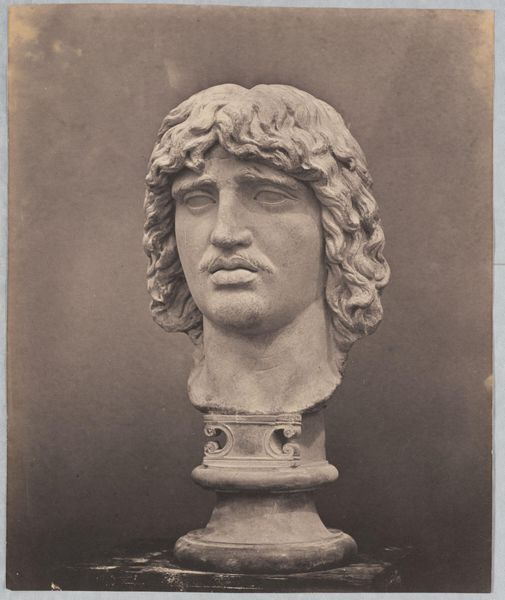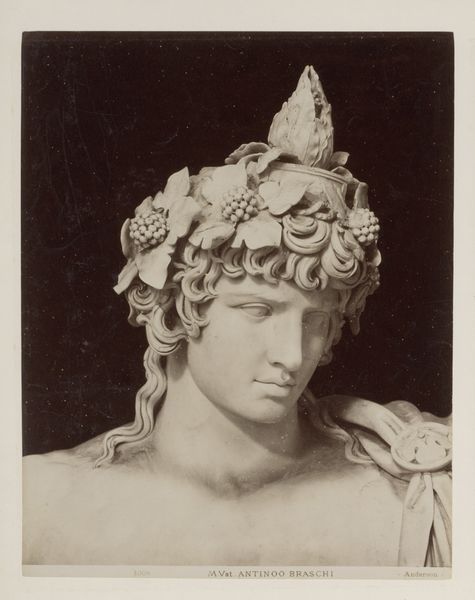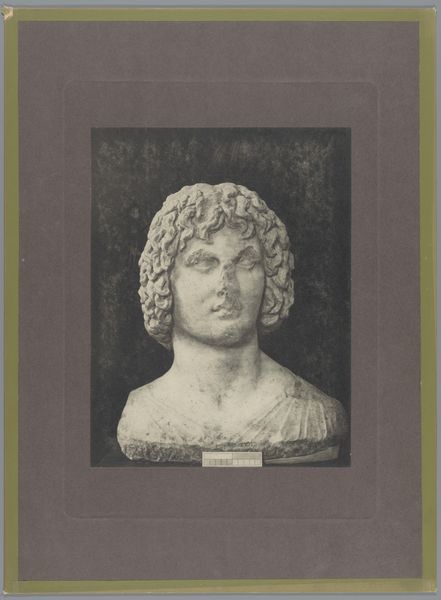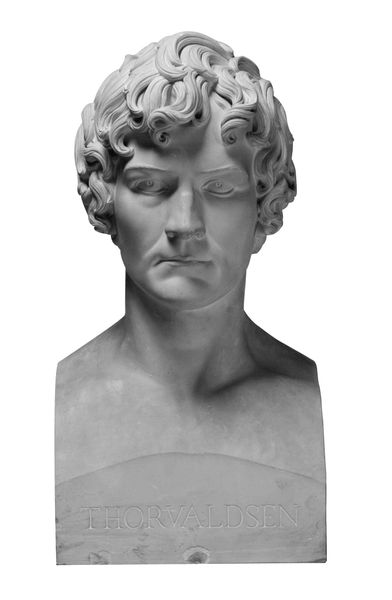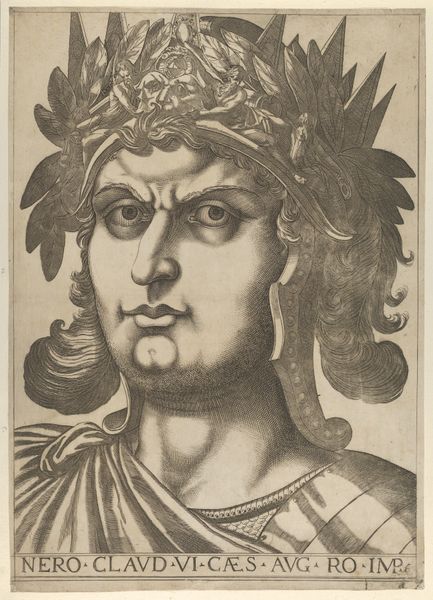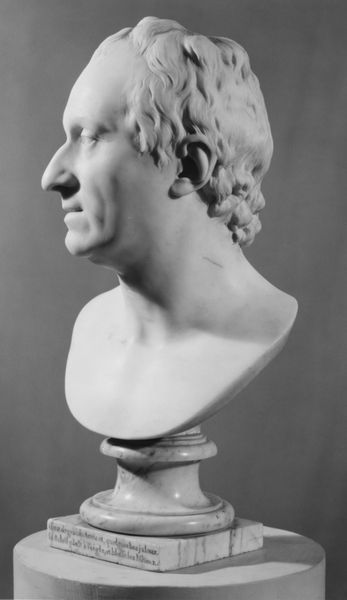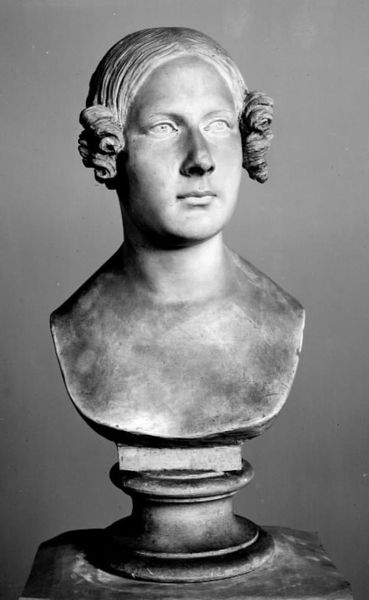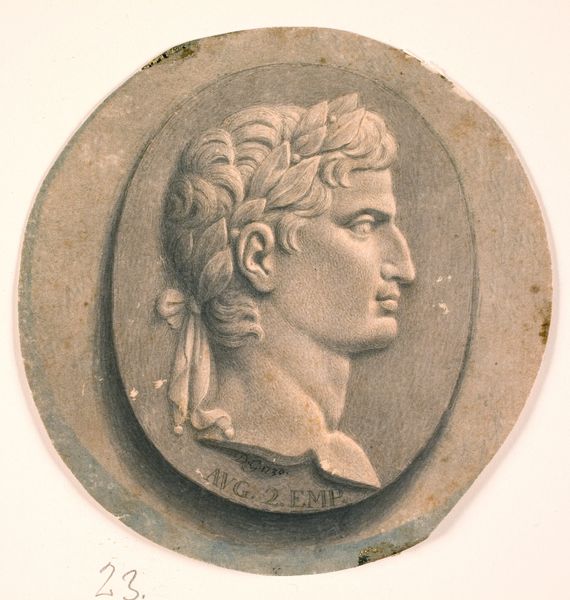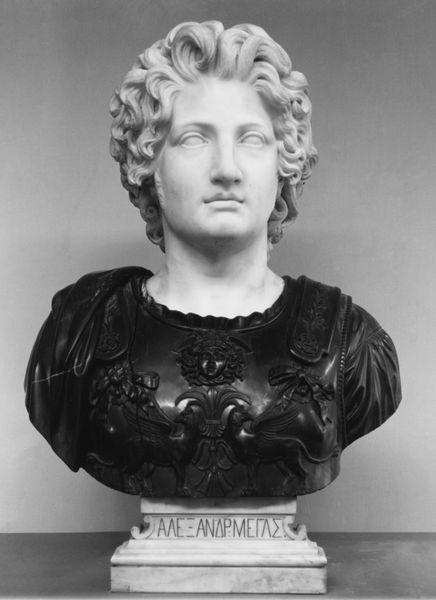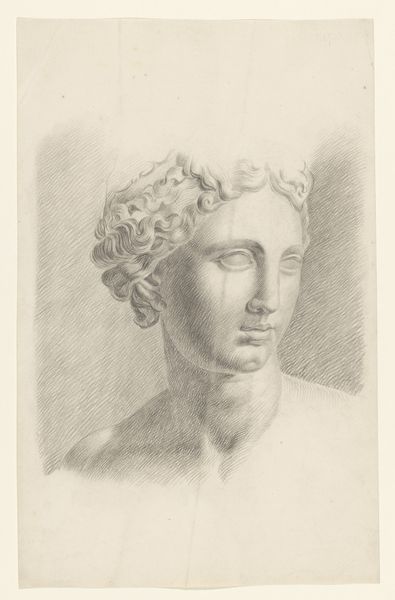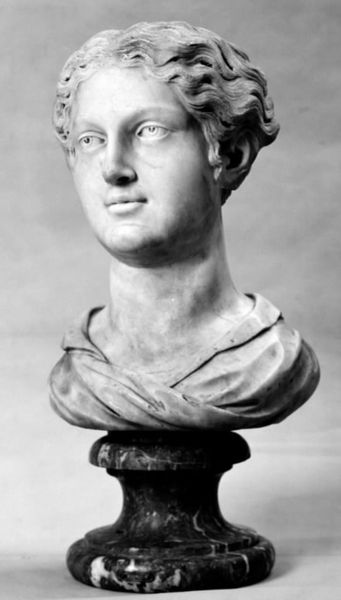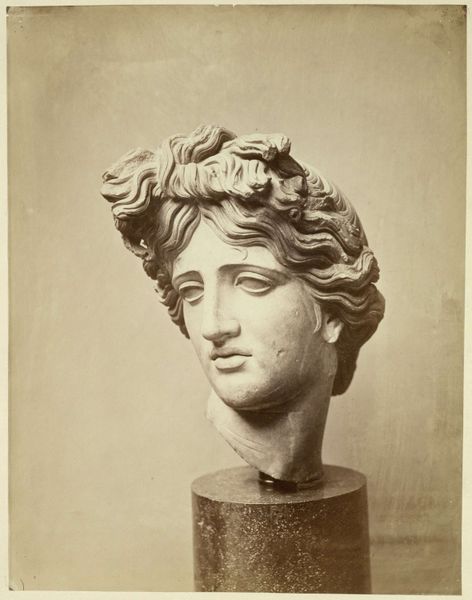
silver, print, photography, sculpture
#
portrait
#
silver
# print
#
sculpture
#
greek-and-roman-art
#
photography
#
sculpture
#
france
#
men
Dimensions: 47.4 × 36.3 cm (image/paper); 61.4 × 48.1 cm (mount)
Copyright: Public Domain
Curator: This is Adolphe Braun’s “Mask of Medusa,” a silver print photograph from 1862, currently residing here at The Art Institute of Chicago. Editor: It strikes me immediately by its muted tones and seemingly classical subject, but the overall impression is somewhat melancholic. Is this how Medusa looked as a man? The androgyny unsettles my perception of her icon. Curator: Yes, Braun presents a bust of Medusa in a rather atypical way. Traditionally, she's depicted with snakes for hair, a symbol of the monstrous feminine and divine wrath, but here, the snaking curls become almost decorative, softening her appearance. Editor: It really calls into question the concept of artistic reproduction at this moment. Why photograph a classical sculpture in this way? The silver print technique provides this remarkable depth of tone; yet it flattens her. How was it used in the sculptural workshops? Was this image serving primarily as a marketing tool? Curator: Intriguing questions! The rise of photography coincided with the expansion of art markets. Reproductions allowed broader access to classical forms. But the act of photographing Medusa, recontextualizing her in a new medium, also impacts her meaning. Consider the weight of that gaze, typically petrifying. Is it diminished by the photographic process, or amplified? Editor: The contrast is fascinating—a cold, mass-produced image capturing an object from ancient myth! It renders it into an item available for bourgeois consumption, almost neutralizing Medusa's terrifying symbolism into just another commodity. And the pedestal is numbered. Inventory or studio cataloging maybe? Curator: The numbered base certainly points to the object's context. We return to your point on function and access. Through Braun's lens, Medusa becomes not just a mythological figure but an object of study, a piece of art history brought into the Victorian parlor through photographic means. Her transformation has become a new symbol of changing social class through consumption, maybe? Editor: So, it really pulls Medusa down from the heights of allegory into something you could order and set upon a mantle place! Now that I look at it that way, that feels chillingly subversive, yet maybe exactly where this material process was always heading.
Comments
No comments
Be the first to comment and join the conversation on the ultimate creative platform.
